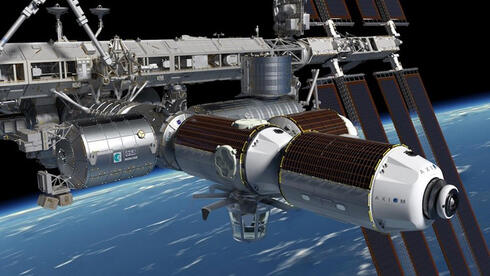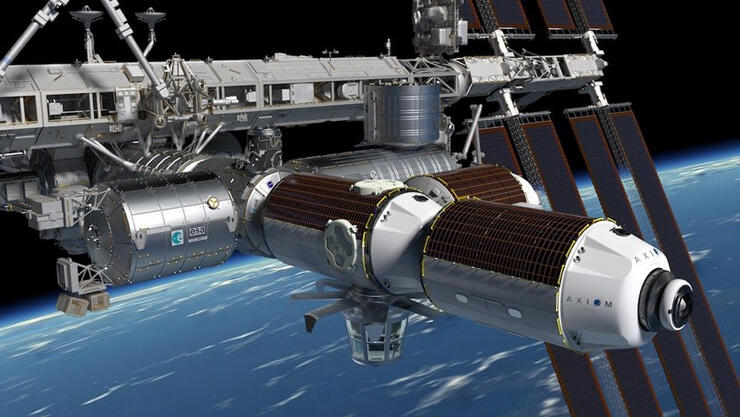
Opinion
Israel’s space race has an IP issue that needs its own exploration
“If you want to develop AI-mediated space technologies and you want to be safe from the nuisance of IP infringement lawsuits, maybe consider developing and launching it from Israel,” writes Dov Greenbaum.
Although NASA’s first attempt at launching its Artemis rocket was ultimately scrubbed, the space launch system (SLS) and the Artemis program, in general, represent a new international focus on space, the moon, and beyond. Inventors and their innovations drive that dream, so it is valuable to assess the nature of intellectual property protection that those inventors might be granted in space.
Intellectual property law, although often influenced by international agreements, is inherently local. A nation’s IP laws are effectively territorial rights that extend only as far (with a handful of judicial exceptions, e.g., WesternGeco LLC v. ION Geophysical Corp) as its physical borders. For the most part that excludes outer space, wherever that is. However, like many aspects of the law of space, we can look to the laws of other ‘provinces of mankind’ here on earth including, for example, the high seas and Antarctica, to determine to what extent there is IP law in space.
The 1952 US Patent Act codified case law dating back to the 1865 Gardiner v. Howe case in legislating that US patent law jurisdiction extends to US-flagged ships on the high seas. Again, in 1990, the US congress applied Gardiner to extend US patent jurisdiction over US-controlled spaceships as well (Codified as 35 US 105).
According to the 1993 case, Hughes Aircraft v. the United States, the goal of the law was "to clarify US patent law with respect to its extraterritorial application aboard US-flag spacecraft, in order to encourage private investment in research and manufacture conducted in outer space.” Germany is reportedly the only other country to codify this extension of national jurisdiction in space. As per Article 12 of the Moon Agreement which was largely ignored by space-faring nations, countries also retain jurisdiction over their moon station installations.
In addition to US law, Article 5 of the IGA, the international agreement relating to activities aboard the International Space Station (ISS), notes that on the ISS, national jurisdiction extends to nationally registered components of the ISS. As such, Russia has jurisdiction over activities in its six modules (for now), the US has jurisdiction over its eight modules, Japan has jurisdiction in its module, and activities in the European Space Agency (ESA) module are obviously a bit more complicated.
Article 21 of the IGA — which is devoted specifically to intellectual property on the ISS — notes that infringing activities in any component within the ISS are deemed to have occurred in the nation state where that component is registered. This jurisdiction is not absolute. IP rules relating to secrecy do not extend to non-nationals that invent in those modules as they might on Earth.
Further, the IGA applies article 5ter of the Paris Convention, codified in the US as 35 USC 272, regulating that putative infringement during temporary transit to and within the ISS is not deemed to be infringing activities.
More recent relevant treaty language can be found in the Artemis Accords. These bilateral space treaties have already been signed between the United States and 21 other countries. Israel signed earlier this year. The newest signatory, Saudi Arabia, signed during President Joe Biden’s recent Middle East trip.
Artemis aims to put humans on the “Moon, Mars, and beyond” which raises the question as to what sort of intellectual property laws if any will be enforced off of Earth and not on a registered space vessel. I.e., on the surface of the Moon.
Two passages in the agreement merit special attention. Section 2.1(b) notes that signatories will develop a framework for the protection of intellectual property, and Section 11, which introduces the concept of nationalized Safety Zones. These quasi-appropriations of portions of celestial bodies may serve the purpose of extending national jurisdiction for the purpose of IP to portions of moons, asteroids, and planets. Infringers operating in these areas might open themselves up to lawsuits. Ostensibly, this jurisdiction expansion does not violate the international rules against appropriation in outer space.
With NASA setting its sights on a human return to the Moon in 2025, these rules could soon come into play.
National jurisdiction in space hinges to a large degree on the registration of the space faring vehicle. The determination as to who registers what in outer space is non-trivial. There is an entire international treaty devoted to regulating this area of law.
Succinctly, most outer space legal obligations fall to what is legally defined as the launching state: “When a space object is launched into earth orbit or beyond, the launching State shall register the space object.” But, just like a US-owned boat can employ flags of convenience and flag the ship to a state with more desirable regulations, a spaceship can be potentially launched from and registered to a launching state of convenience, outside of US patent jurisdiction.
Could that include Israel? There is an effort to develop a commercial space port in Israel that would allow for commercial space launches from Israel. Considering that as per the most recent annual patent report submitted by the Israel Patent Office, the patent office received around 8100 patent applications annually, compared to the 660,000 received by the US Patent Office the same year, Israel – with the rare ability to design build and launch its own space vehicles - could become a desirable flag of convenience for space exploration vis-à-vis potentially infringing technology.
As a viable space flag of convenience, we might see a huge increase in the number of foreign patentees in Israel (at last count there were around 1600 foreign applications per year, mostly pharmaceuticals) seeking to circumvent this loophole and patent in Israeli jurisdiction, as well as putative infringers seeking to register and launch their space vehicles from an Israeli commercial space port.
In the meantime, the only current earth-based explorers, and potential patent infringers, on the moon or anywhere else in the solar system will continue to be robots. Consider, Mars is the only known planet wholly inhabited by robots. Could AI machines operating in outer space be infringers of patents? Could you sue for infringement? Who would you even sue?
AI innovation continues to advance rapidly. Blenderbot 3, the third iteration of an AI chatbot developed by Meta (Facebook) was announced in early August. In no time the chatbot, like many AI bots prior became an antisemitic bigot. Ironically, the same bot has been shown to also be a relentless advocate for synagogue attendance, albeit with a warped understanding of Judaism.
Whether or not you believe that artificial intelligence has already achieved sentience because it understands the political situation in Israel well enough to joke about it, the patent offices of the world are struggling to figure out how AI fits within the patent system.
Earlier this month the United State Federal Circuit, the appellate patent law court, affirmed the US Patent office determination and a lower court ruling that an AI cannot be an inventor on a US patent. The court found the US patent act to be unambiguous: only natural people can be inventors. Ostensibly, under this ruling, if an AI did invent something, then the invention will be part of the public domain, as the innovation will be legally unpatentable without an actual inventor. However, the court did leave open the possibility that a human and an AI could be co-inventors on a legitimate patent.
The court also did not discuss the issue of whether an AI has sufficient personhood to infringe patents. As per US law, 35 USC 27(h) infringers include states, their officers, and their instrumentalities. It's unclear if the law is broad enough to also include AI. Similarly, under US copyright regulations, infringement has to be by an ‘anyone,’ which seems to exclude non-legal persons.
Perhaps the human creators of an AI could be liable. Possibly not, AI has been shown to be able to evolve and modify its programming based on its ability to learn. AI can even write its own programs. This could partially or fully sever human AI programmers and operators from liability for both direct and perhaps even indirect infringement by that AI. The opacity of AI activities would also make proving actual infringement difficult.
This could be further complicated when that AI is infringing in outer space where jurisdiction is less clear. Israel has shown itself to be a leader in space-based AI computing. So, if you want to develop AI-mediated space technologies and you want to be safe from the nuisance of IP infringement lawsuits, maybe consider developing and launching it from Israel.
Prof. Dov Greenbaum is the director of the Zvi Meitar Institute for Legal Implications of Emerging Technologies at the Harry Radzyner Law School, at Reichman University.














